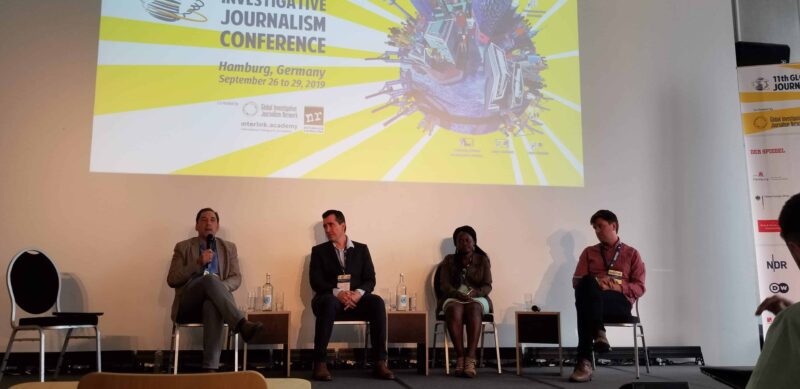The illegal trade in items as varied as parrot eggs and caviar, rare reptiles and ornamental fish was on the agenda when the Earth Journalism Network (EJN) gathered several of its current grantees investigating wildlife trafficking in Hamburg in September.
The journalists are all working on investigative reports under EJN’s program on the illegal wildlife trade, developed with the support of the Oak Foundation. The project focuses on the under-reported role of Europe as a source, transit hub and market.
So far, it has resulted in 13 in-depth stories on issues ranging from tiger farms in the Czech Republic to songbird smuggling from Italy to Malta, and new forensic techniques for detecting wildlife crime. These reports have been published by high-profile outlets including The Guardian, Los Angeles Times, National Geographic, BBC, the South China Morning Post and so have reached a large combined audience.
The meeting in Hamburg enabled EJN’s grantees to share their experiences, seek input on story ideas and identify opportunities for future collaboration. Guest speaker Natasha Daly from National Geographic also provided insights into the magazine’s coverage of wildlife crime and described her two-year investigation into the dark side of wildlife tourism.
In addition, the meeting was an opportunity for the gathered journalists to learn about #WildEye, the interactive map developed by EJN partner Oxpeckers Investigative Environmental Journalism to track seizures, arrests, court cases and convictions related to the illegal wildlife trade across Europe. The hundreds of data points now on the map are revealing patterns and trends that journalists can further investigate.
EJN timed the meeting to coincide with the 11th Global Investigative Journalism Conference, which took place in Hamburg immediately afterwards. Many journalists who have worked with EJN as grantees, partners and members over the years also attended that conference, as well as EJN staffers James Fahn, Nantiya Tangwisutijit and Florence Armein.
Fahn, who wrote a piece on Investigating Climate Change for the Global Investigative Journalism Network that has since been turned into a tipsheet, spoke on a panel about that topic at the conference and moderated a separated panel titled “Climate Change – What Comes Next?”
“It was a great week of exploration on how to investigate environmental, wildlife and climate change stories,” said Fahn, EJN’s executive director. “The fact that there were so many sessions at the Global Investigative Journalism Conference focused on the environment and related topics – climate change, food and agriculture, wildlife and animal welfare, extractive industries – really bodes well for the future of investigative environmental reporting, if journalists get the support they need.”
(Banner photo: EJN executive director James Fahn (far left) speaks during a panel at the Global Investigative Journalism Conference in Hamburg, Germany / Credit: Florence Armein)
